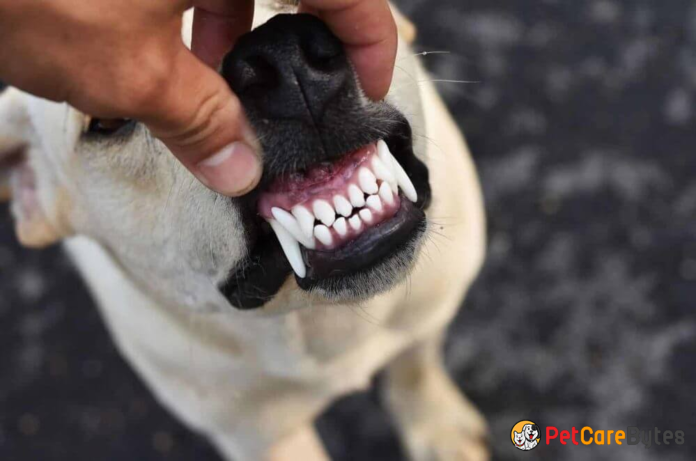As a pet owner, you should keep an eye on your dog’s teeth because problems with oral health are common in dogs over the age of 3. Our Madison veterinarians are here to tell you how many teeth your dog should have and why it might be losing teeth.
Contents
How Many Teeth Do Dogs Have?
As a puppy grows into an adult dog, the number of teeth in its mouth will change.
Puppy Teeth
Puppies are born without teeth, and they don’t get their first ones until they are 3 to 4 weeks old. By the time they are 3 to 5 months old, most puppies have all 28 of their teeth, including their front teeth, back teeth, and canine teeth.
Adult Teeth
Dogs get their adult teeth between the ages of 3 and 7 months. Adult dogs should have 42 permanent teeth, while people only have 32 teeth that don’t fall out.
There are 20 teeth in their upper jaw and 22 teeth in their lower jaw.
Types of Dog Teeth
Each of a dog’s four types of teeth—incisors, canines, premolars, and molars—has its own job. Here’s what each type of tooth in your dog’s mouth does and where it’s located:
Incisors
What part of your dog’s smile is in front? The front teeth! These are the small teeth that are right in front of the upper and lower jaw. They use them to get at bits of meat and to clean their fur.
Canines
The canines, or “fangs,” are located behind the incisors. Above and below, there are two long, pointed, and very sharp teeth. Canine teeth are used to tear meat and grab things. Dogs can also show these teeth when they feel threatened or defensive, which is why it’s so important to understand dog body language.
Pre-Molars
Wide pre-molars, or carnassials, are on both the top and bottom sides of a dog’s jaw. Because these teeth are used to shred and chew a lot, they are pretty sharp.
Molars
Flat molars are at the very back of a dog’s mouth, both above and below. He uses these to chew on treats or kibble that are hard.
Why Dogs Lose Teeth
A dog shouldn’t lose teeth unless they are changing from baby teeth to adult teeth. If you see that your dog is losing its adult teeth, you should call your vet to set up an appointment for a dental checkup.
Here are some of the most common reasons why an adult dog’s teeth fall out.
- Periodontal Disease – The most common reason a dog loses teeth is that they have advanced dental disease in their mouth. Periodontal disease can lead to diseased gums and rotting teeth if you don’t take care of your teeth properly, like by brushing and having your vet clean your teeth.
- Trauma – Your dog’s teeth can fall out if he or she gets hurt in the mouth, like by biting something or getting bitten by another animal. Dense minerals or bone is used to make some of the most common things that can break bones or knock out teeth. To protect your dog’s teeth, it’s best not to give it hard things like beef or pork bones. This kind of food is often too hard and can cause fractures or damage to the teeth.
- Tooth decay – Dogs’ teeth get decayed and worn down much more quickly than ours do. They can pick things up, carry things, and chew things with their teeth. A lot of things, like slobbery toys, hair, dirt, poop, and food, also go through a dog’s mouth. All of this can affect how well their teeth are in general. Some dogs, especially small breeds and Greyhounds, get tooth decay very quickly, so they have to have a vet pull out a lot of teeth over the course of their lives.
Read More: Braces to Fix Your Dog’s Teeth
How To Prevent Dogs From Losing Their Teeth
By the time they are three years old, more than 80% of dogs will have some kind of gum disease, such as gingivitis. This means you need to brush your dog’s teeth often to keep dental disease at bay. It’s a good idea to give your puppy dental chews, and you should also take him to the vet every so often for a thorough cleaning.
Talk to your vet if you notice that your dog has trouble chewing or if you have any other concerns about their teeth or mouth, like bad breath. They can help you figure out what to do to keep those teeth healthy.
If you notice that your dog is losing teeth, has teeth that are loose or moving around, or has bad breath that is getting worse, please make an appointment with a vet as soon as possible. Even if it looks like they only lost one tooth, it’s likely that they have more painful, diseased teeth in their mouth that need to be taken out. Don’t wait until your pet stops eating to talk to your vet about his or her teeth. Use your pet’s annual exam as a chance to talk about his or her teeth and dental health in general, before there is a problem.




















